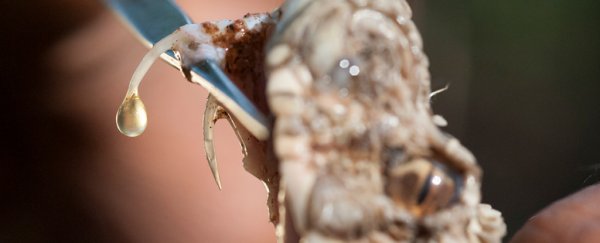REALLY BIG EGOS
Analysis: Archegos meltdown set to intensify shadow banking regulatory scrutiny
By Michelle Price and Katanga Johnson

© Reuters/CARLO ALLEGRI FILE PHOTO: A person walks past 888 7th Ave, a building that reportedly houses Archegos Capital in New York City
WASHINGTON (Reuters) - The implosion of New York-based Archegos Capital Management and the resulting losses for global banks is likely to intensify regulatory efforts to curtail the ballooning shadow banking sector and shed light on its risks.
Scrutiny of nonbanks was already a priority for Democratic lawmakers and Treasury Secretary Janet Yellen after hedge funds were involved in last year's Treasury market turmoil, dislocations in the repurchase agreement market in 2019, and January's GameStop saga.
The meltdown at Archegos, run by former hedge fund manager Bill Hwang, is another strike against the lightly regulated nonbank sector, said analysts. Archegos' soured leveraged equity bets have left big banks that financed its trades nursing at least $6 billion in losses, drawing scrutiny from watchdogs.
Despite managing around $10 billion and being leveraged to the tune of around $50 billion, according to a person with knowledge of the fund's positions, Archegos was not directly regulated because it manages Hwang's personal wealth as a single-family office.
On Wednesday, Yellen is leading the first meeting of the Financial Stability Oversight Council (FSOC) under the new Biden administration. The body is set to discuss hedge fund activity, among other issues, and analysts expect it will address Archegos too.
The U.S. Securities and Exchange Commission (SEC), which is a member of FSOC, has been discussing the incident with brokers to understand the impact on them and their customers, and areas of potential additional exposure, said one person with knowledge of the matter.
"The forced deleveraging of Archegos will keep the 'gamification' of markets a continued focus of Congress and federal financial regulators," wrote Raymond James analysts, adding policymakers would likely push for tougher single-family office disclosure rules, among other new reforms.
After the 2009 financial crisis, Congress imposed tough rules on banks, pushing riskier activities into more lightly regulated sectors, such as asset managers and private funds, also referred to as the shadow banking sector.
In response, the FSOC began a review of the asset management industry, warning in 2016 that leveraged hedge funds could cause instability during market stress if they became forced sellers. It planned to monitor the risks and plug data gaps, but the former Trump administration shut down that project.
REGULATORY BLIND SPOT
Family offices are even more of a regulatory blind spot. Single-family offices, which invest just one family's wealth, are not required to register with the SEC and therefore, unlike hedge funds, do not have to disclose their assets, bank relationships and other operational information.
While FSOC's 2020 annual report found net U.S. hedge fund assets were $2.9 trillion - $6.3 trillion in gross assets when accounting for leverage - it gave no data on family office assets.
Several market participants were surprised that Hwang could have quietly amassed so much leverage with so little oversight.
"The markets had no idea how big the (Archegos) positions were, in what stocks, how much was going to be sold, who owned it, what the leverage was," Dennis Kelleher, CEO of Washington think tank Better Markets, wrote in a note.
"That's because the shadow banking system remains non-transparent in material respects and much larger than it was in 2008."
Advisory group Campden Wealth reported in 2019 that the number of family offices globally had risen 38% over the previous two years, with total assets valued at $5.9 trillion. Consultancy EY recently estimated that global family-office capital had outstripped private equity and venture capital combined.
In the United States, light-touch regulation has made family offices attractive to hedge fund managers keen to shed outside investors and many, including several industry stars, have converted to family offices over the past decade.
Hwang converted his hedge fund Tiger Asia Management into a single-family office after the SEC fined him and the fund in 2012 for breaching its trading rules.
Kelleher said he expected a review of the U.S. rules on family office and hedge fund disclosures, as well as of broker risk management and the types of derivatives Hwang used to create leverage.
"Biden administration regulators need to act swiftly and comprehensively to protect our financial system," he added.
(Reporting by Michelle Price and Katanga Johnson in Washington; Additional reporting by Chris Prentice in Washington and Matt Scuffham in New York; Editing by Matthew Lewis
WASHINGTON (Reuters) - The implosion of New York-based Archegos Capital Management and the resulting losses for global banks is likely to intensify regulatory efforts to curtail the ballooning shadow banking sector and shed light on its risks.
Scrutiny of nonbanks was already a priority for Democratic lawmakers and Treasury Secretary Janet Yellen after hedge funds were involved in last year's Treasury market turmoil, dislocations in the repurchase agreement market in 2019, and January's GameStop saga.
The meltdown at Archegos, run by former hedge fund manager Bill Hwang, is another strike against the lightly regulated nonbank sector, said analysts. Archegos' soured leveraged equity bets have left big banks that financed its trades nursing at least $6 billion in losses, drawing scrutiny from watchdogs.
Despite managing around $10 billion and being leveraged to the tune of around $50 billion, according to a person with knowledge of the fund's positions, Archegos was not directly regulated because it manages Hwang's personal wealth as a single-family office.
On Wednesday, Yellen is leading the first meeting of the Financial Stability Oversight Council (FSOC) under the new Biden administration. The body is set to discuss hedge fund activity, among other issues, and analysts expect it will address Archegos too.
The U.S. Securities and Exchange Commission (SEC), which is a member of FSOC, has been discussing the incident with brokers to understand the impact on them and their customers, and areas of potential additional exposure, said one person with knowledge of the matter.
"The forced deleveraging of Archegos will keep the 'gamification' of markets a continued focus of Congress and federal financial regulators," wrote Raymond James analysts, adding policymakers would likely push for tougher single-family office disclosure rules, among other new reforms.
After the 2009 financial crisis, Congress imposed tough rules on banks, pushing riskier activities into more lightly regulated sectors, such as asset managers and private funds, also referred to as the shadow banking sector.
In response, the FSOC began a review of the asset management industry, warning in 2016 that leveraged hedge funds could cause instability during market stress if they became forced sellers. It planned to monitor the risks and plug data gaps, but the former Trump administration shut down that project.
REGULATORY BLIND SPOT
Family offices are even more of a regulatory blind spot. Single-family offices, which invest just one family's wealth, are not required to register with the SEC and therefore, unlike hedge funds, do not have to disclose their assets, bank relationships and other operational information.
While FSOC's 2020 annual report found net U.S. hedge fund assets were $2.9 trillion - $6.3 trillion in gross assets when accounting for leverage - it gave no data on family office assets.
Several market participants were surprised that Hwang could have quietly amassed so much leverage with so little oversight.
"The markets had no idea how big the (Archegos) positions were, in what stocks, how much was going to be sold, who owned it, what the leverage was," Dennis Kelleher, CEO of Washington think tank Better Markets, wrote in a note.
"That's because the shadow banking system remains non-transparent in material respects and much larger than it was in 2008."
Advisory group Campden Wealth reported in 2019 that the number of family offices globally had risen 38% over the previous two years, with total assets valued at $5.9 trillion. Consultancy EY recently estimated that global family-office capital had outstripped private equity and venture capital combined.
In the United States, light-touch regulation has made family offices attractive to hedge fund managers keen to shed outside investors and many, including several industry stars, have converted to family offices over the past decade.
Hwang converted his hedge fund Tiger Asia Management into a single-family office after the SEC fined him and the fund in 2012 for breaching its trading rules.
Kelleher said he expected a review of the U.S. rules on family office and hedge fund disclosures, as well as of broker risk management and the types of derivatives Hwang used to create leverage.
"Biden administration regulators need to act swiftly and comprehensively to protect our financial system," he added.
(Reporting by Michelle Price and Katanga Johnson in Washington; Additional reporting by Chris Prentice in Washington and Matt Scuffham in New York; Editing by Matthew Lewis
888 (eight hundred eighty-eight) is the natural number following 887 and preceding 889. Contents. 1 In mathematics; 2 Symbology and numerology; 3 See also ...
Archegos · the chief leader, prince. of Christ · one that takes the lead in any thing and thus affords an example, a predecessor in a matter, pioneer · the author.
What is Archegos and what does it mean for Indian markets, explained
A primer on what went wrong at Archegos and the important learnings it offers, also in the Indian context.
ASHISH RUKHAIYAR
MARCH 31, 2021 / 06:04 PM IST
Archegos is a Greek word that means one who leads the way. Archegos Capital Management, however, seems to have gone the wrong way and led some of the biggest global banks with it who are now facing billions of dollars in potential losses. Here is a primer on what went wrong at Archegos and the important learnings it offers, also in the Indian context.
What is Archegos Capital Management?
Archegos is a New York-based family office that primarily invests in stocks in markets like the US, China, Korea and Japan. It was founded by Bill Hwang who was formerly an equity analyst with now-defunct hedge fund Tiger Management. Incidentally, Tiger Management was founded by the famous hedge fund manager and US billionaire Julian Robertson whose many former employees, including Hwang, went on to start their own successful hedge funds and were popularly known as ‘Tiger Cubs’.
Prior to starting Archegos in its current form, Hwang was managing the show at Tiger Asia Management and Tiger Asia Partners but had to abruptly shut shop in 2012 after a slew of insider trading charges by the Securities and Exchange Commission (SEC). He and his firms had to pay $44 million to settle the charges while also agreeing to stay away from the investment advisory business. Thereafter, he converted his firm into a family office—firms that manage the money of wealthy families. Remember, family offices are outside the regulatory scrutiny of the SEC and most of their information is not in the public domain.
Why is Archegos in the news?
Archegos Capital: Will Indian market see another Lehman moment?
Archegos crisis: 10 things to know about former Tiger Asia manager Bill Hwang
The family office was forced into a fire sale—selling assets at a very low price— of securities worth around $20 billion last week after some of its portfolio stocks witnessed a significant price fall. Some have seen their price drop by one-third. Archegos had huge exposure through swaps (we’ll come to swaps in a moment) in Viacom CBS Corporation and Discovery Communications along with Chinese majors Baidu Inc and Tencent Holdings, the world’s largest video game vendor.The fall in market prices of its portfolio stocks triggered margin calls and the failure to bring in additional margins forced marquee banks including Nomura, Credit Suisse, UBS, Deutsche Bank, Goldman Sachs and Morgan Stanley to liquidate the holdings of Archegos. Further, while the quantum of potential losses for the banks would differ, it will be significant, to say the least. While Nomura has already said – without naming Archego - it is facing a potential loss of $2 billion, Credit Suisse has said it is facing “highly significant and material” losses.
The most important learning is the risk posed by large firms that are able to operate outside the regulator's purview
What is a swap and how did it trigger margin calls?
Swaps are a kind of derivative instrument that can be traded over the counter amongst deep-pocketed institutional investors without the requirement of any public reporting. Swaps allow investors to take huge positions without having to remit large sums of money upfront.
They do essentially by borrowing from banks— called leverage in market parlance. While the underlying securities were publicly traded shares, swaps gave Archegos the benefit of leverage, which was much higher than that allowed to a regulated entity.
Leverage refers to borrowed money used for trading. In such transactions, the client has to immediately bring in additional money if the stock prices fall since it leads to a fall in the value of the margin with the broker. This is so called margin calls, triggered when an investor's equity as a share of the total market value of securities held falls below a certain requirement.
So did leverage have anything to do with Archegos?Oh yes! Swaps do increase the size of investments in stocks by enabling investors to put only a limited amount of money. But when the underlying investments go bad, banks typically sell the shares they hold on behalf of investors. Ditto with brokers. If a client is unable to bring in more cash, brokers resort to selling the assets and, depending on the prices, booking losses in their own books
ASHISH RUKHAIYAR is a financial journalist
ASHISH RUKHAIYAR
MARCH 31, 2021 / 06:04 PM IST
Archegos is a Greek word that means one who leads the way. Archegos Capital Management, however, seems to have gone the wrong way and led some of the biggest global banks with it who are now facing billions of dollars in potential losses. Here is a primer on what went wrong at Archegos and the important learnings it offers, also in the Indian context.
What is Archegos Capital Management?
Archegos is a New York-based family office that primarily invests in stocks in markets like the US, China, Korea and Japan. It was founded by Bill Hwang who was formerly an equity analyst with now-defunct hedge fund Tiger Management. Incidentally, Tiger Management was founded by the famous hedge fund manager and US billionaire Julian Robertson whose many former employees, including Hwang, went on to start their own successful hedge funds and were popularly known as ‘Tiger Cubs’.
Prior to starting Archegos in its current form, Hwang was managing the show at Tiger Asia Management and Tiger Asia Partners but had to abruptly shut shop in 2012 after a slew of insider trading charges by the Securities and Exchange Commission (SEC). He and his firms had to pay $44 million to settle the charges while also agreeing to stay away from the investment advisory business. Thereafter, he converted his firm into a family office—firms that manage the money of wealthy families. Remember, family offices are outside the regulatory scrutiny of the SEC and most of their information is not in the public domain.
Why is Archegos in the news?
Archegos Capital: Will Indian market see another Lehman moment?
Archegos crisis: 10 things to know about former Tiger Asia manager Bill Hwang
The family office was forced into a fire sale—selling assets at a very low price— of securities worth around $20 billion last week after some of its portfolio stocks witnessed a significant price fall. Some have seen their price drop by one-third. Archegos had huge exposure through swaps (we’ll come to swaps in a moment) in Viacom CBS Corporation and Discovery Communications along with Chinese majors Baidu Inc and Tencent Holdings, the world’s largest video game vendor.The fall in market prices of its portfolio stocks triggered margin calls and the failure to bring in additional margins forced marquee banks including Nomura, Credit Suisse, UBS, Deutsche Bank, Goldman Sachs and Morgan Stanley to liquidate the holdings of Archegos. Further, while the quantum of potential losses for the banks would differ, it will be significant, to say the least. While Nomura has already said – without naming Archego - it is facing a potential loss of $2 billion, Credit Suisse has said it is facing “highly significant and material” losses.
The most important learning is the risk posed by large firms that are able to operate outside the regulator's purview
What is a swap and how did it trigger margin calls?
Swaps are a kind of derivative instrument that can be traded over the counter amongst deep-pocketed institutional investors without the requirement of any public reporting. Swaps allow investors to take huge positions without having to remit large sums of money upfront.
They do essentially by borrowing from banks— called leverage in market parlance. While the underlying securities were publicly traded shares, swaps gave Archegos the benefit of leverage, which was much higher than that allowed to a regulated entity.
Leverage refers to borrowed money used for trading. In such transactions, the client has to immediately bring in additional money if the stock prices fall since it leads to a fall in the value of the margin with the broker. This is so called margin calls, triggered when an investor's equity as a share of the total market value of securities held falls below a certain requirement.
So did leverage have anything to do with Archegos?Oh yes! Swaps do increase the size of investments in stocks by enabling investors to put only a limited amount of money. But when the underlying investments go bad, banks typically sell the shares they hold on behalf of investors. Ditto with brokers. If a client is unable to bring in more cash, brokers resort to selling the assets and, depending on the prices, booking losses in their own books
Just like in the US, family offices in India are also an unregulated lot
Large scale selling as we know triggers a drop in value of shares. This happened in the case of Archegos — all the stocks it invested fell sharply. This is why the global banks are facing huge potential losses.
What are the important learnings from Archegos?
The most important learning is the risk posed by large firms that are able to operate outside the purview of the regulators. Hedge funds are often called ‘hot money’ and are regulated to some extent by various regulators across the globe.
Family offices, however, have been able to stay out of the framework and the recent episode has made many question the exemption especially at a time when some family offices are believed to be dealing in securities worth billions and therefore could pose a systemic risk if left unchecked. This assumes significance as regulated firms have limits in terms of overall position limits and the quantum of leverage.
Is this issue relevant in the Indian context?
In the Indian market, the biggest institutional investors—whether foreign or domestic—are regulated by the Securities and Exchange Board of India (SEBI). These regulated entities are subject to limits in terms of exposure and leverage and though there have been instances of margin calls getting triggered in the Indian market, they have been far and few.
More importantly, the limits have been laid down in a manner to minimise any potential systemic risk. While such risks cannot be fully eliminated, adequate checks and balances have been included in the regulatory framework for all the regulated entities. Unregulated entities dealing in shares, however, could pose risks in the absence of any kind of monitoring.
Are family offices regulated by SEBI in India?
Just like in the US, family offices in India are also an unregulated lot. This assumes significance as family offices in India also deal with shares of listed companies and hence are a part of the capital market.
The family offices of some of the richest Indian families have assets running into millions of dollars and experts believe that it is time that such entities are brought under the purview of the capital market regulator who can keep a check on their position limits and leverage among other things.
“Family offices are not registered by SEBI as a category of AIF, REITs, PMS or Investment Advisors or in any other capacity. They also do not require any specific exemption the way it works in the US,” said Sumit Agrawal, Founder, Regstreet Law Advisors & a former SEBI officer.
“Promoters or controlling shareholders have family offices but unlike other structures such as AIF or PMS, here the family has a large say in the final investment decision. Indian regulator, today does not regulate it, but it is a matter of time, when they will ask for disclosures from family offices, and in a subsequent phase perhaps categorise them as an intermediary,” added Mr Agrawal.
Large scale selling as we know triggers a drop in value of shares. This happened in the case of Archegos — all the stocks it invested fell sharply. This is why the global banks are facing huge potential losses.
What are the important learnings from Archegos?
The most important learning is the risk posed by large firms that are able to operate outside the purview of the regulators. Hedge funds are often called ‘hot money’ and are regulated to some extent by various regulators across the globe.
Family offices, however, have been able to stay out of the framework and the recent episode has made many question the exemption especially at a time when some family offices are believed to be dealing in securities worth billions and therefore could pose a systemic risk if left unchecked. This assumes significance as regulated firms have limits in terms of overall position limits and the quantum of leverage.
Is this issue relevant in the Indian context?
In the Indian market, the biggest institutional investors—whether foreign or domestic—are regulated by the Securities and Exchange Board of India (SEBI). These regulated entities are subject to limits in terms of exposure and leverage and though there have been instances of margin calls getting triggered in the Indian market, they have been far and few.
More importantly, the limits have been laid down in a manner to minimise any potential systemic risk. While such risks cannot be fully eliminated, adequate checks and balances have been included in the regulatory framework for all the regulated entities. Unregulated entities dealing in shares, however, could pose risks in the absence of any kind of monitoring.
Are family offices regulated by SEBI in India?
Just like in the US, family offices in India are also an unregulated lot. This assumes significance as family offices in India also deal with shares of listed companies and hence are a part of the capital market.
The family offices of some of the richest Indian families have assets running into millions of dollars and experts believe that it is time that such entities are brought under the purview of the capital market regulator who can keep a check on their position limits and leverage among other things.
“Family offices are not registered by SEBI as a category of AIF, REITs, PMS or Investment Advisors or in any other capacity. They also do not require any specific exemption the way it works in the US,” said Sumit Agrawal, Founder, Regstreet Law Advisors & a former SEBI officer.
“Promoters or controlling shareholders have family offices but unlike other structures such as AIF or PMS, here the family has a large say in the final investment decision. Indian regulator, today does not regulate it, but it is a matter of time, when they will ask for disclosures from family offices, and in a subsequent phase perhaps categorise them as an intermediary,” added Mr Agrawal.
Incidentally, a report by Edelweiss in 2018 stated that there were around 40-45 formal family office structures in India with their average assets under management pegged at $318 million.
ASHISH RUKHAIYAR is a financial journalist












 © Provided by National Post The Irish government's 'Our Rural Future' strategy includes the creation of more than 400 remote working hubs in locations, potentially, such as Galway.
© Provided by National Post The Irish government's 'Our Rural Future' strategy includes the creation of more than 400 remote working hubs in locations, potentially, such as Galway. © REUTERS/Johanna Geron The COVID-19 pandemic has delivered ‘an unparalleled opportunity’ to balance economic recovery across Ireland, says the Irish Taoiseach Micheál Martin.
© REUTERS/Johanna Geron The COVID-19 pandemic has delivered ‘an unparalleled opportunity’ to balance economic recovery across Ireland, says the Irish Taoiseach Micheál Martin. © John Cogill/Bloomberg News Life in Kilkenny, with 26,500 people, is a far cry from the pace in Dublin.
© John Cogill/Bloomberg News Life in Kilkenny, with 26,500 people, is a far cry from the pace in Dublin.

















